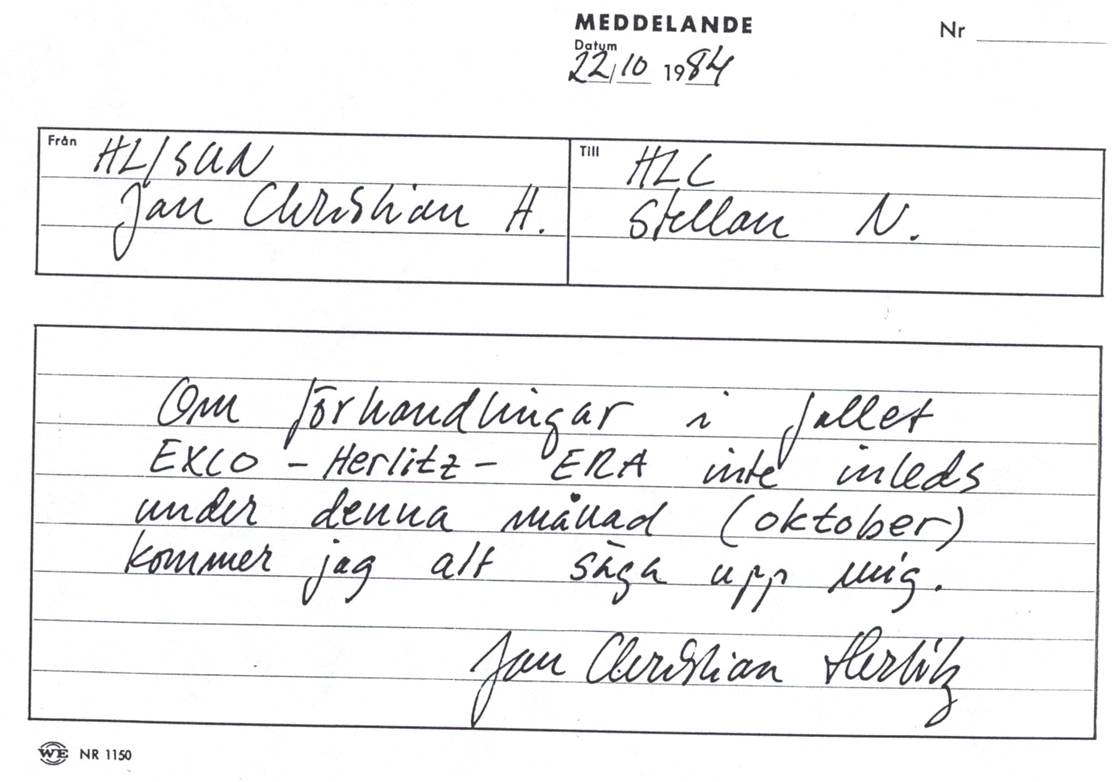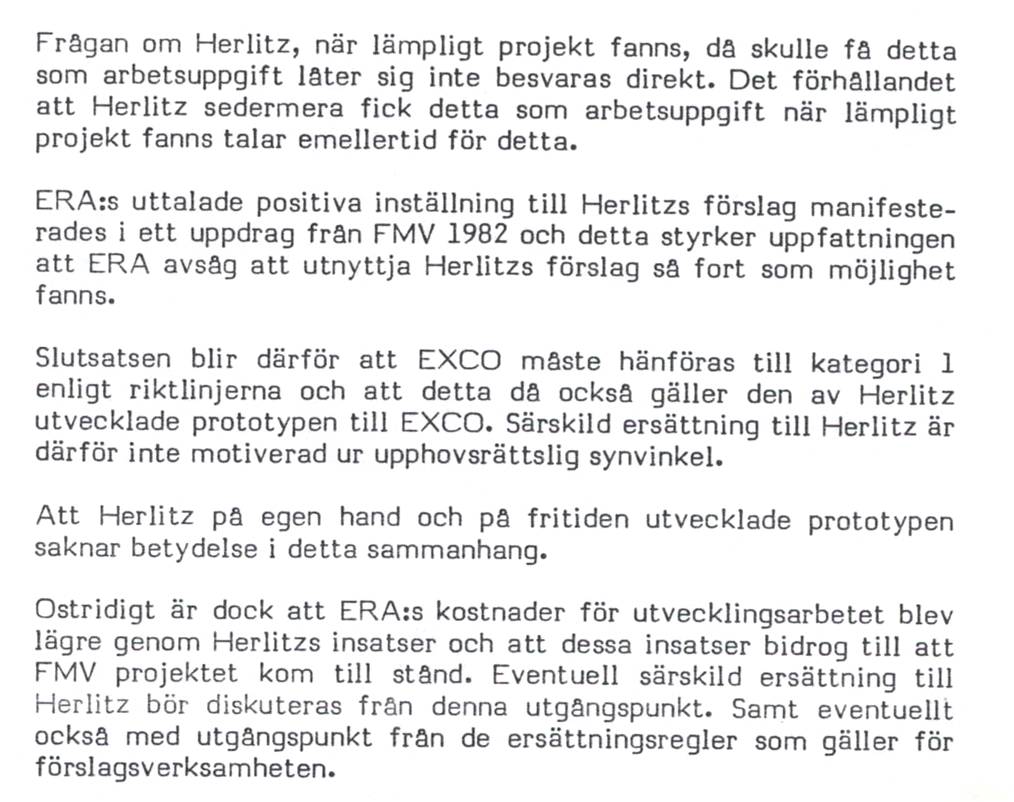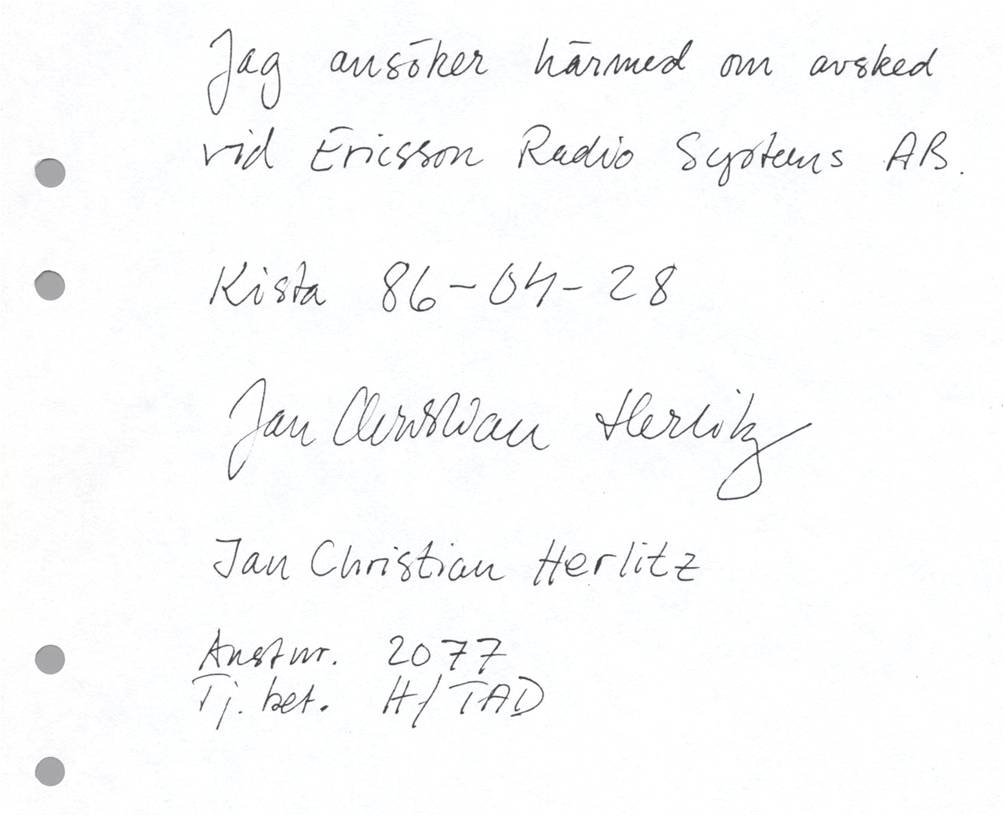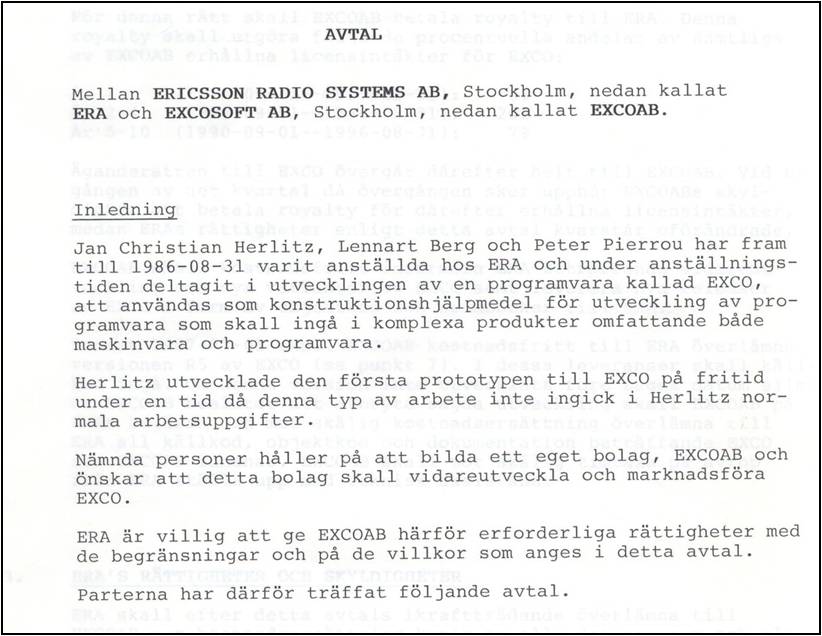How We Built Excosoft part 3: The Birth of a Company
The Spread of EXCO
EXCO’s usage spread quickly after Försvarets materielverk (FMV) adopted it into their operations in 1983. First at Ericsson Radio Systems (ERA) where I worked, then within other Ericsson companies — like Ericsson Radar Electronics (ERE) in Gothenburg, Ericsson Information Systems (EIS) in Kista, and Erisoft in Luleå. Next, EXCO spread to other large industrial companies, such as SAAB Military Aircraft in Linköping, ESAB in Laxå and ABB Automation in Västerås.
Soon enough, a technology consulting company called Frontec was requesting to become a distributor. It was through them that EXCO proceeded to spread to Alfa Laval in Tumba, and Atlas Copco in Lindingö.
EXCO also circulated outside of Sweden. It was adopted, for example, by the National Industri in Norway (an ABB-company), ERA in Singapore, and by the Department of Defense in the USA. We even ended up getting a distributor in Australia— Nils Öhman from Sea Software.
Why so popular? One factor that contributed to the large number of EXCO adopters was the fact that EXCO was designed for both word processing and programming. EXCO’s spread was further eased by the fact that it operated on VAX VMS computers, which were used almost exclusively in the industry during the first half of the 80s— there really didn’t exist any competing software.
Once I visited ERE in Gothenburg, who was a big user of EXCO. As I wandered through the corridors I could look into every room and see people working with EXCO. When the rumor got around that the system’s creator was on site for a visit, everyone came out of their rooms to greet me and talk functions. I felt like a rock star making an appearance before his fans.
Formation of the EXCO Group
A group was now forming around me and EXCO at Ericsson Radio Systems. The first to join was Lennart Berg, who was an outgoing technician. He held courses, did customizations, and made onsite visits with customers. Then came Peter Pierrou— a young programmer who many years later, in 2005, became CEO of Excosoft. Pär Wretman, another young programmer, also joined the group.
Peter and Pär were brilliant programmers (and so was I!). Many years later I realized how critical it was to get hold of the best— not even 50 proficient programmers could take the place of 3 brilliant ones.
Ericsson was an awfully hierarchical organization. The EXCO group’s designation was HL/SUN which stands for: Division H, Part L, Department S, Section U, and Group N. We needed a group manager, and it became Lars-Göran Bernland.
Negotiations with ERA
I could hardly fathom that within merely a few years EXCO had grown into its own business entity. ERA was earning a whole lot of profit from licensing, and the organization had become much more effective through improved documentation.
Ericsson had an established, “suggestion process” (Swedish: “förslagsverksamhet”) entailing that a suggestion or idea which later lead to a patentable innovation would be rewarded: half of the profits made the first year would be given to the inventor. Therefore, in 1984, I began to negotiate on compensation for “The EXCO-Invention.”
It didn’t go so well, and I was moved to issue an ultimatum:

Translation: If the negotiations in the case of EXCO-Herlitz-ERA are not initiated this month (October), then I am going to quit.
…
The matter was delegated higher and higher up in the organization until finally it ended up at the top, with patent-manager, Bengt Gamstorp. He answered as follows:

Translation:
On the question of whether Herlitz should, in the arrival of a suitable project, then receive it as a work duty, cannot be answered directly. The circumstances under which Herlitz subsequently received [EXCO] as a work duty however, speaks in favor of that.
ERA’s stated positive attitude towards Herlitz’ innovation manifested in an assignment from FMV in 1982, and that strengthens the viewpoint that ERA intended to exploit Herlitz’ innovation as soon as the possibility existed.
The conclusion is therefore that EXCO must be assigned category 1, according to the guidelines, and that this then also applies to Herlitz’ developed prototype EXCO. Special compensation to Herlitz is therefore not motivated from the copyright standpoint.
That Herlitz independently, and in his free time, developed the prototype, lacks meaning in this context.
It goes without saying that ERA’s expenses for the development work became lower due to Herlitz’ efforts and that those efforts contributed to the materialization of the FMV project. Possible special compensation to Herlitz should be discussed from this starting point. Possibly also from the starting point of the compensation guidelines, which are outlined in our “suggestion process.”
…
The critical question was whether the development of EXCO could be considered as falling within the scope of my natural work duties. According to Gamstorp: “Herlitz is employed as a programmer, so it doesn’t matter what he programs.”
That enraged me. Just because I know how to handle a “hammer” doesn’t mean that I can build anything.
Excosoft the Company is Born
Developing EXCO at ERA began to feel increasingly uncomfortable. Lennart used to interpret the tense situation, saying: “ERA is used to selling large software systems at a loss, but EXCO is a little program selling at a profit — and that makes them confused.”
Our group also started getting questioned by the managers: “Now that development of EXCO is complete, couldn’t the group then be phased out?!”
I remember demonstrating for several managers at ERA how quickly one could wander between a variety of documents within EXCO, simply by following links. Several mangers burst out in alarm: “But then you have access to everything!”
This episode, and many others, inspired a certain repetitive thought to take root—should we just pull out of here?
Lennart called around to our big customers asking: “What would you say if EXCO were to develop into its own company?” And he got the (a bit surprising) answer: “It would be perfect— we’ll hold off on our orders until you’ve gotten yourselves established.”
So one spring day, in 1986, Lennart and I met up at my house.
“Do we dare?” I asked.
“Yes,” Lennart answered, without the slightest hesitation.
Neither of us had a clue about what to expect. It was a decision that just felt right.
I submitted my resignation on a slip of paper:

Translation: I hereby apply for termination from Ericsson Radio Systems AB.
…..
When ERA was faced with the fact of my resignation, negotiations sped up. Lennart, Peter and I signed an agreement which gave us rights to EXCO, in exchange for that ERA could use the product and get new versions for free.

Translation:
Agreement
Between ERICSSON RADIO SYSTEMS AB, Stockholm, referred to below as ERA, and EXCOSOFT AB, Stockholm, referred to below as EXCOAB.
Introduction
Jan Christian Herlitz, Lennart Berg, and Peter Pierrou have, since 1986-08-31, been employed at ERA, and under their period of employment have participated in the development of a software called EXCO, to be used as a design tool for the development of software to be used as part of complex products, including both hardware and software.
Herlitz developed the first EXCO prototype in his free time during a time when that type of work was not included in Herlitz’ normal work duties.
The named persons are building their own company, EXCOAB, and wish that this company shall further develop and market EXCO.
ERA is willing to give ECOAB, the necessary rights, with the restrictions and conditions provided in this agreement.
The parties have therefore come to the following agreement.
…..
On September 1st, 1986, a little over 28 years ago today, Lennart, Peter, and I founded Excosoft. Pär decided to complete a project before joining us one year later, and Lars-Göran decided to continue on at Ericsson.
So we went from that sheltered existence at “Big Ericsson” to where we now found ourselves— at little Excosoft.
How does one run a company? We had no idea.
